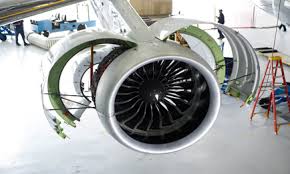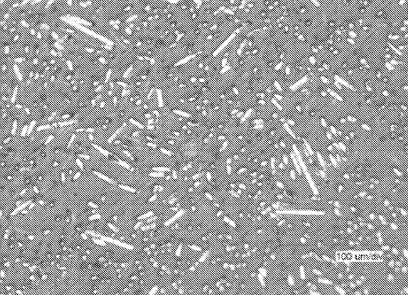When it comes the production of aircraft and high performance cars, two companies may stand out. Boeing, the designer and manufacturer of fixed-wing aircraft, rockets and satellites has been in the industry for close to a century. Lotus, the manufacturer of sports cars and F1 race cars has been doing what they do best for over 60 years. When it comes down to it, these two companies over the years, have found ways to continue to innovate upon both their designs and their manufacturing processes. This is what has kept them in the game for so long.
You wouldn’t think that the two companies would really have much use for each other, but this simply is not true. Boeing and Lotus have teamed up and have been working together since 2005 to try and design stronger, more useful parts via 3D printing (additive manufacturing). By using a new type of patent-pending technology the two companies have found a way to fix one of the issues that is presented through the 3D printing of production parts.
As most of us know, 3D printers, no matter the technology used, builds up an object one layer at a time. In FDM 3D printers, a plastic or plastic-like material is melted and then extruded out of a nozzle and onto a print bed in single layers. Once the first layer is printed, the printer moves its extruder up slightly to begin on the next. In selective laser sintering (SLS), a powder is distributed evenly and then a laser melts the powder, thus creating a solid object. Once the first layer is hardened with the laser, another layer of powder is distributed and the laser goes to work once again. This occurs until the desired object is fabricated.
Both Boeing and Lotus have been using selective laser sintering for some time now, in both prototyping and in the production of final parts. Most people who have a fairly significant knowledge of 3D printing, know that the process of this layer-by-layer printing can cause weaknesses where the individual layers are joined together. This especially is the case when printing products that are not made of metal. For novice 3D printer users, this usually is not a cause for concern. However, when you are in the business of manufacturing airplanes and 200 mph race cars, this can not simply be overlooked.
One method used to try and reinforce 3D printed objects via laser sintering is that of putting fine particles of carbon fiber or glass material into each layer of the print. However, this does not create a part that is as strong as those manufactured using traditional methods. Boeing and Lotus went back to the drawing board to come up with a solution.
Like mentioned above, these SLS 3D printers work by putting a single layer of powder down and then hitting it with a laser. This means that the strands of reinforcement material (carbon fiber) are laid out in such a way that the reinforcement is created in only a single direction because the pieces of carbon fiber are simply laid down all facing that same general direction. What this means to the structural integrity of the 3D printed object, is that it will only be strong in that one direction. In this case, that direction is parallel to the layers. This doesn’t do all that much in making the printed object much stronger than it would be without the added material in the first place.
So what the team of engineers came up with, was a way in which these added particles of carbon fiber could be used in order to actually create a more substantial increase in strength of the final product. What they found was that if they created an additional set of reinforcement particles which were both smaller and more random in size, and then added these particles in, along with the original carbon fiber particles, the object became quite significantly stronger. To determine the size variables of these particles and distribution, many studies took place, many of which would be useless to explain unless you are educated in advanced engineering.
While the entire process is very complicated, and the reasoning for why it works equally so, in summary, the smaller random sized particles of carbon fiber (or other reinforcement materials) are able to be oriented in different ways. This allows for the bonding of the carbon fiber to the rest of the polymer used, thus making it stronger, in all directions; not only in the one direction that is realized when using the initial larger unidirectional particles of the same size.
Here is a video of Brett Lyons, Material and Process Engineer at Boeing explaining how the two companies are working together to use 3D printing in the production of both their aircraft and F1 race cars, and how this technology is helping them create better parts.
With the introduction of this new technology, Boeing and Lotus will be able to use 3D printing in more ways than one, in both rapid prototyping as well as the creation of final production parts. What do you think? Discuss in the Boeing / Lotus forum thread on 3DPB.com
Subscribe to Our Email Newsletter
Stay up-to-date on all the latest news from the 3D printing industry and receive information and offers from third party vendors.
You May Also Like
Profiling a Construction 3D Printing Pioneer: US Army Corps of Engineers’ Megan Kreiger
The world of construction 3D printing is still so new that the true experts can probably be counted on two hands. Among them is Megan Kreiger, Portfolio Manager of Additive...
US Army Corps of Engineers Taps Lincoln Electric & Eaton for Largest 3D Printed US Civil Works Part
The Soo Locks sit on the US-Canadian border, enabling maritime travel between Lake Superior and Lake Huron, from which ships can reach the rest of the Great Lakes. Crafts carrying...
Construction 3D Printing CEO Reflects on Being Female in Construction
Natalie Wadley, CEO of ChangeMaker3D, could hear the words of her daughter sitting next to her resounding in her head. “Mum, MUM, you’ve won!” Wadley had just won the prestigious...
1Print to Commercialize 3D Printed Coastal Resilience Solutions
1Print, a company that specializes in deploying additive construction (AC) for infrastructure projects, has entered an agreement with the University of Miami (UM) to accelerate commercialization of the SEAHIVE shoreline...

































